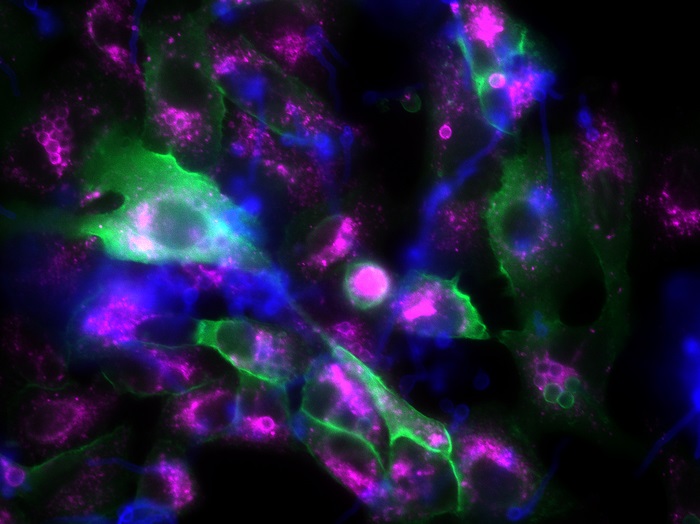The pathogenic fungus Aspergillus fumigatus is an environmentally prevalent mold found worldwide. However, for people with a weakened immune system, it can become a serious threat. The fungus escapes elimination from surface cells of the human lung by binding to a human protein. Now, researchers at the Leibniz Institute for Natural Product Research and Infection Biology (Leibniz-HKI) report they have discovered a possible new target against the fungal infection.
The findings are published in Cell Host & Microbe in an article titled, “Aspergillus fumigatus hijacks human p11 to redirect fungal-containing phagosomes to non-degradative pathway.”
“The decision whether endosomes enter the degradative or recycling pathway in mammalian cells is of fundamental importance for pathogen killing, and its malfunctioning has pathological consequences,” wrote the researchers. “We discovered that human p11 is a critical factor for this decision.”
The team at Leibniz-HKI has now discovered that fungal spores can inhibit the protective response of surface cells of the lungs. “These epithelial cells in our lungs are an important barrier against fungal spores and other potential pathogens in the air,” explained Axel Brakhage, director of the Leibniz-HKI and professor at Friedrich Schiller University in Jena.
Unlike immune cells, lung epithelial cells are not specialized in killing pathogens, but are capable of doing so. The cells enclose foreign bodies to form a membrane-confined compartment known as a phagosome.
The researchers discovered that the human protein p11 appears to be bound by a fungal protein. “When we switch off the fungal protein that binds to p11, we find the fungal spores in the ‘mature’ phagosomes, which means they are killed. If we knock out the human p11, likewise,” said Jia. “However, if the fungal protein and p11 are intact, the phagosomes remain ‘immature’.” Then the epithelial cells of the lung contain the fungal spores but do not destroy them. The researchers were also able to observe this under a microscope.
These findings reveal the role of p11 in mediating fungal PS evasion.
“Patients with a particular mutation in the p11 gene were less likely to develop invasive aspergillosis. This result helps to keep a particularly close eye on patients who are more at risk,” said Jia. Both the fungal protein that binds to p11 and the human protein itself are possible targets for treatment of the fungal infection.







